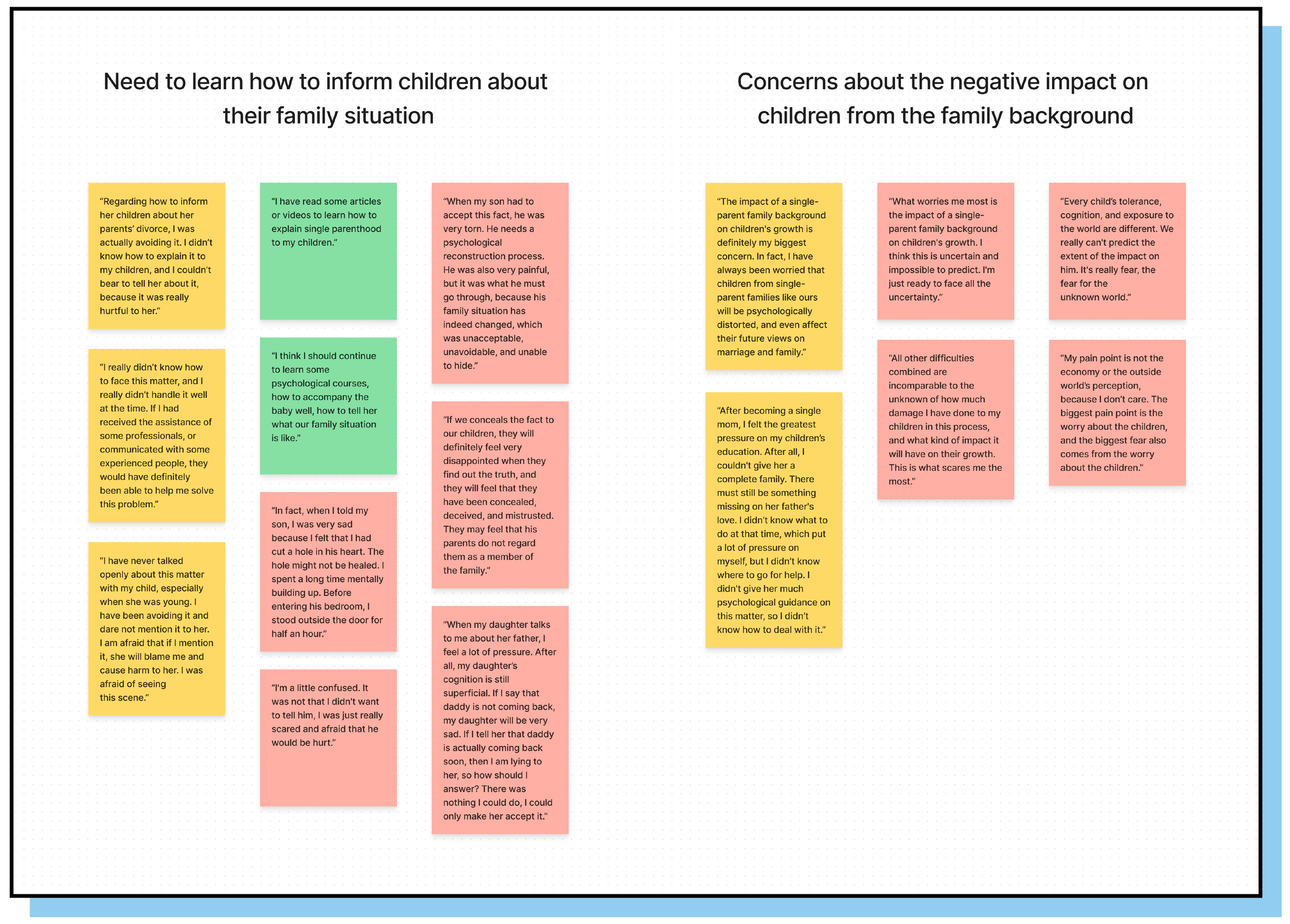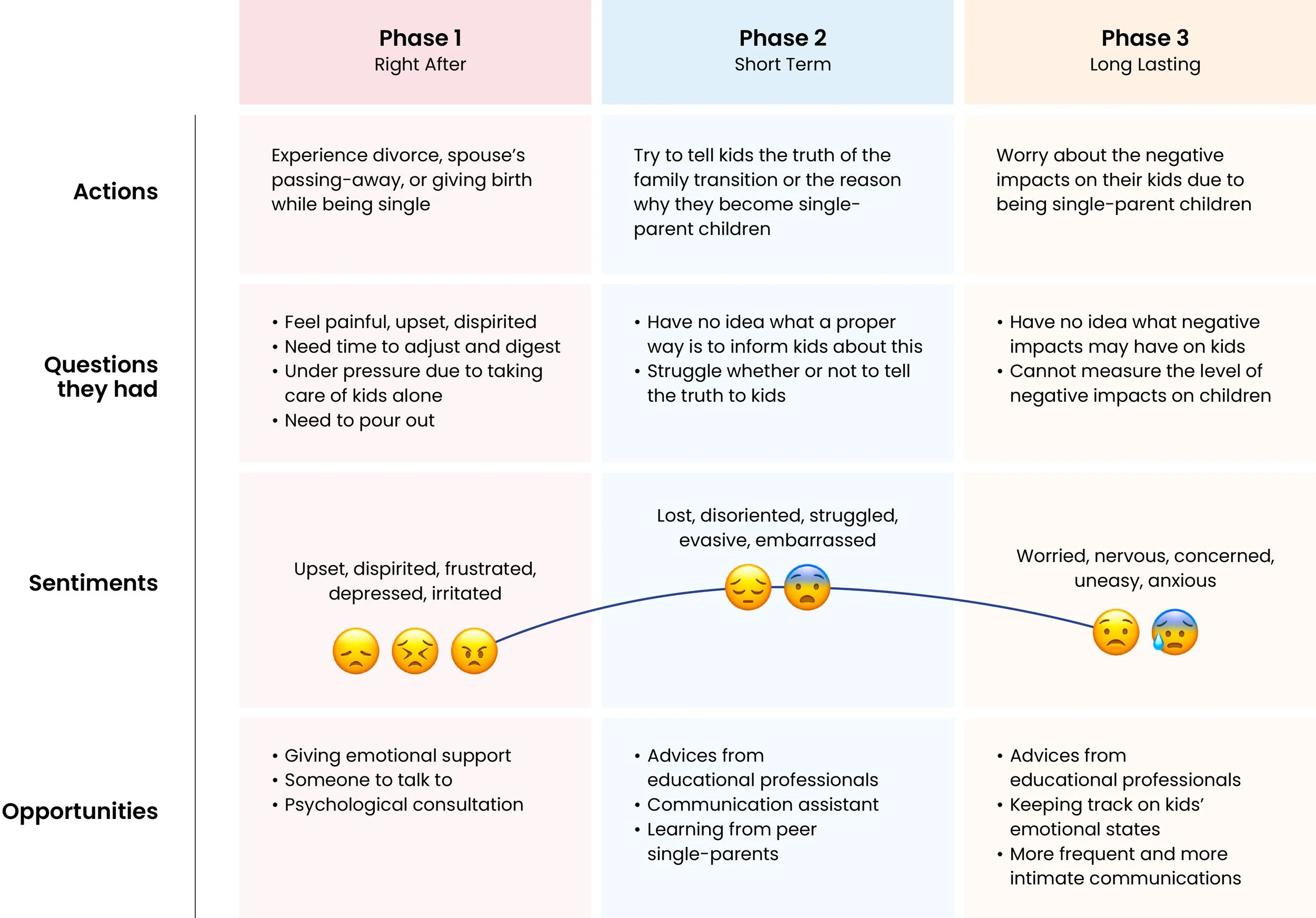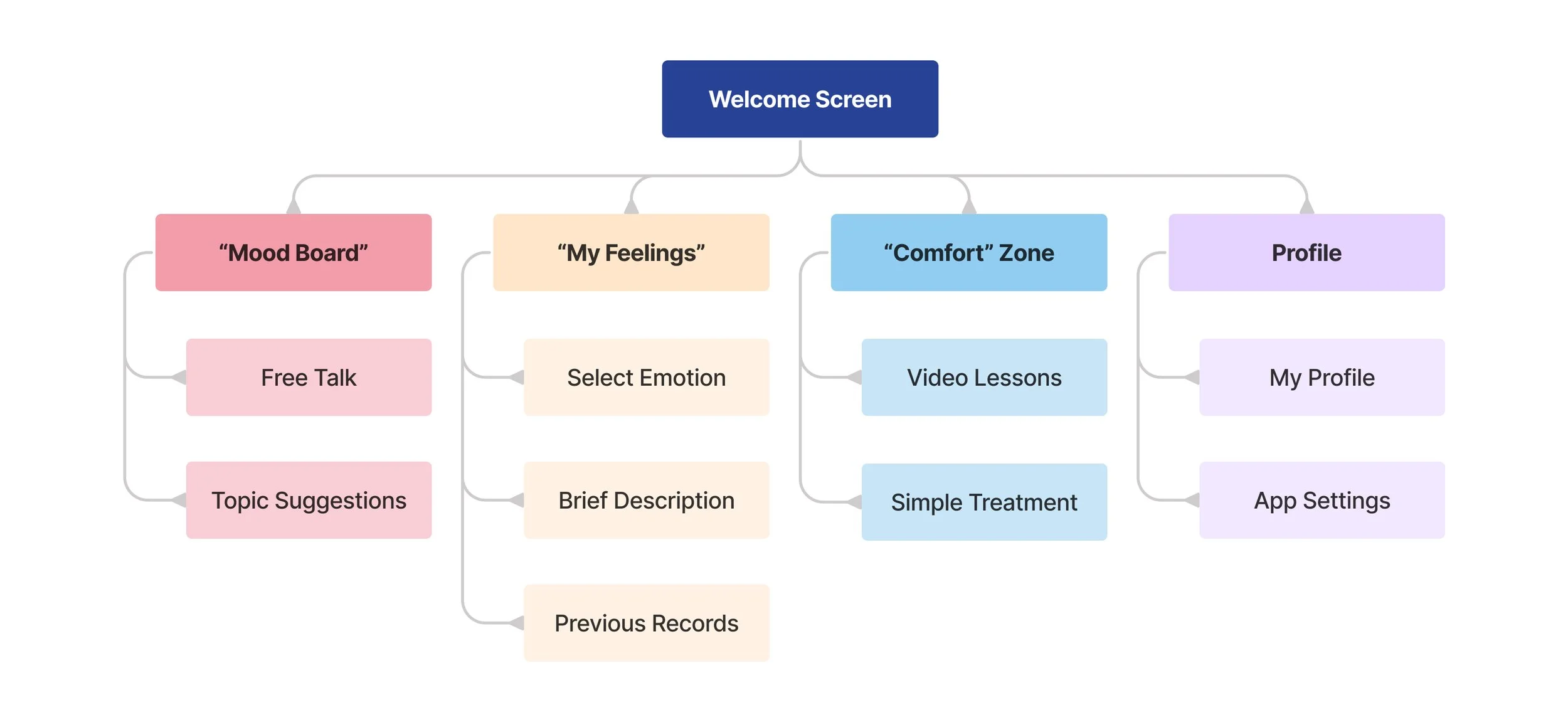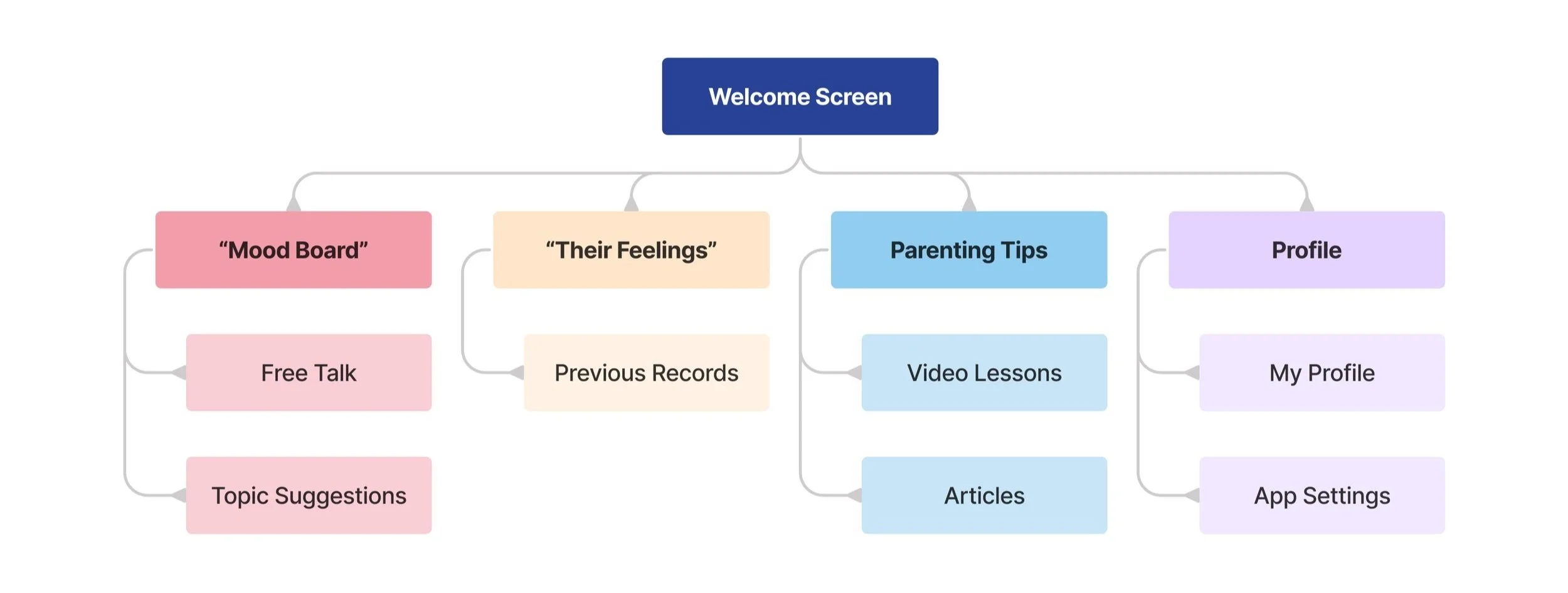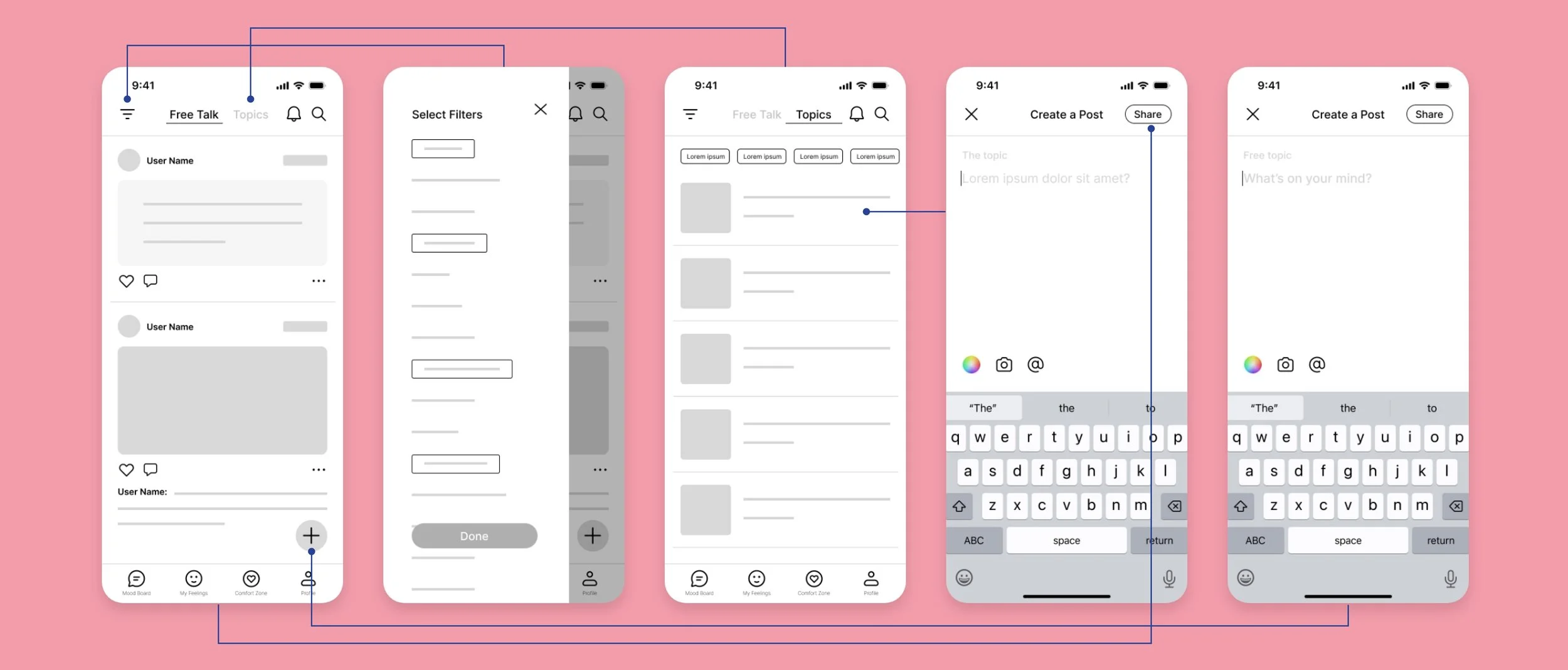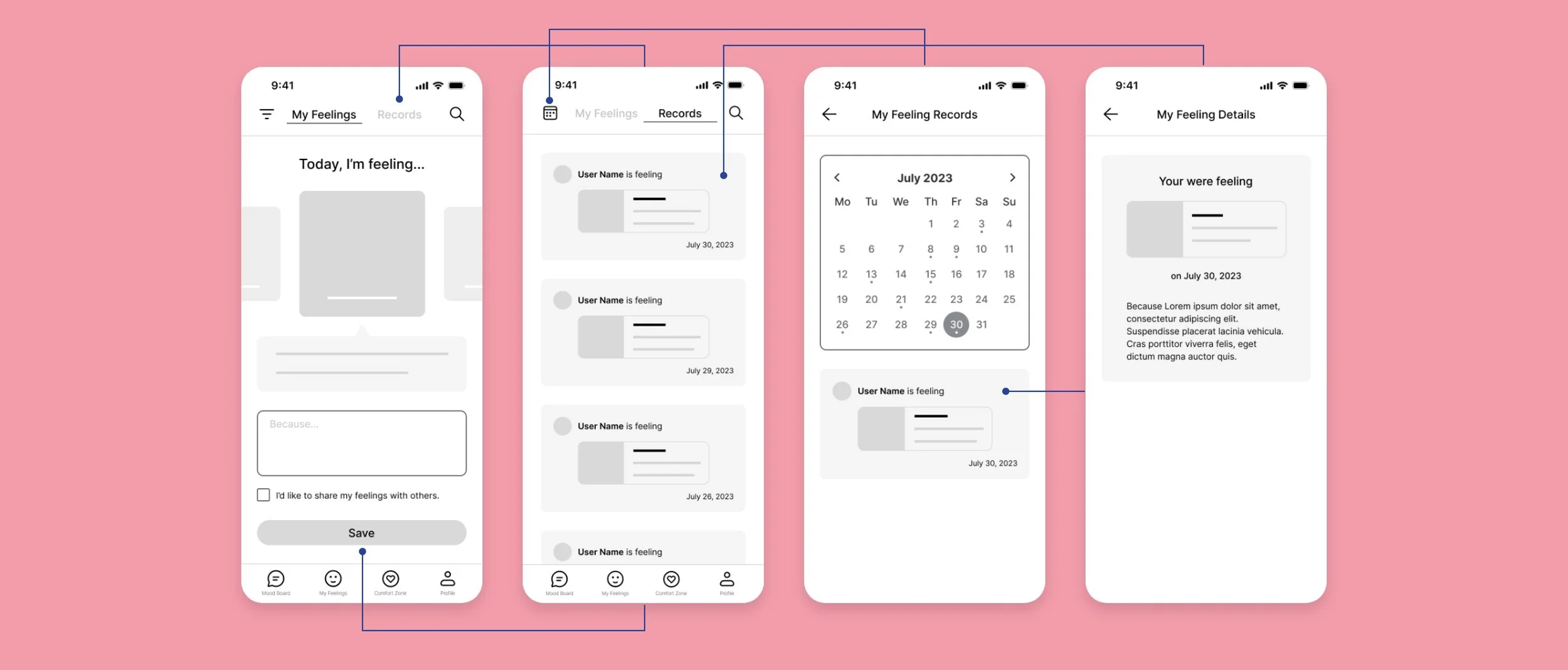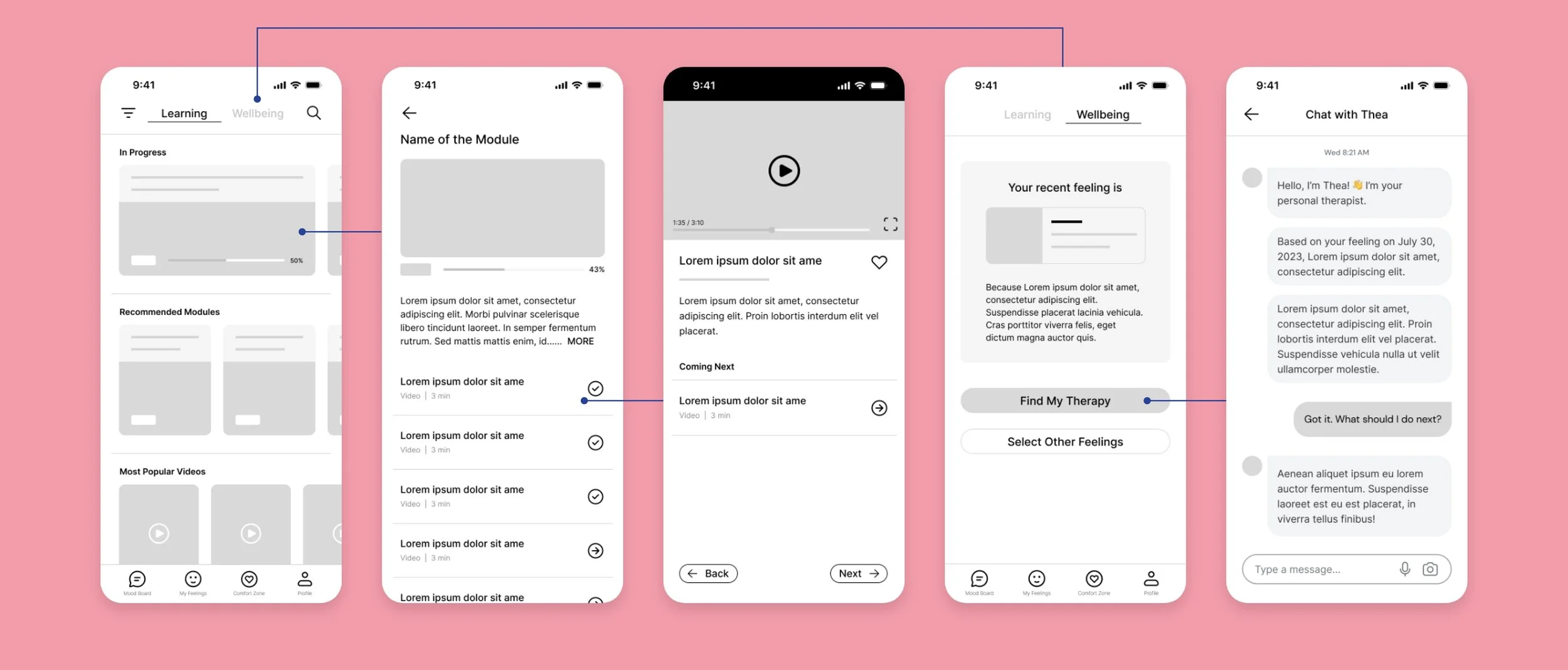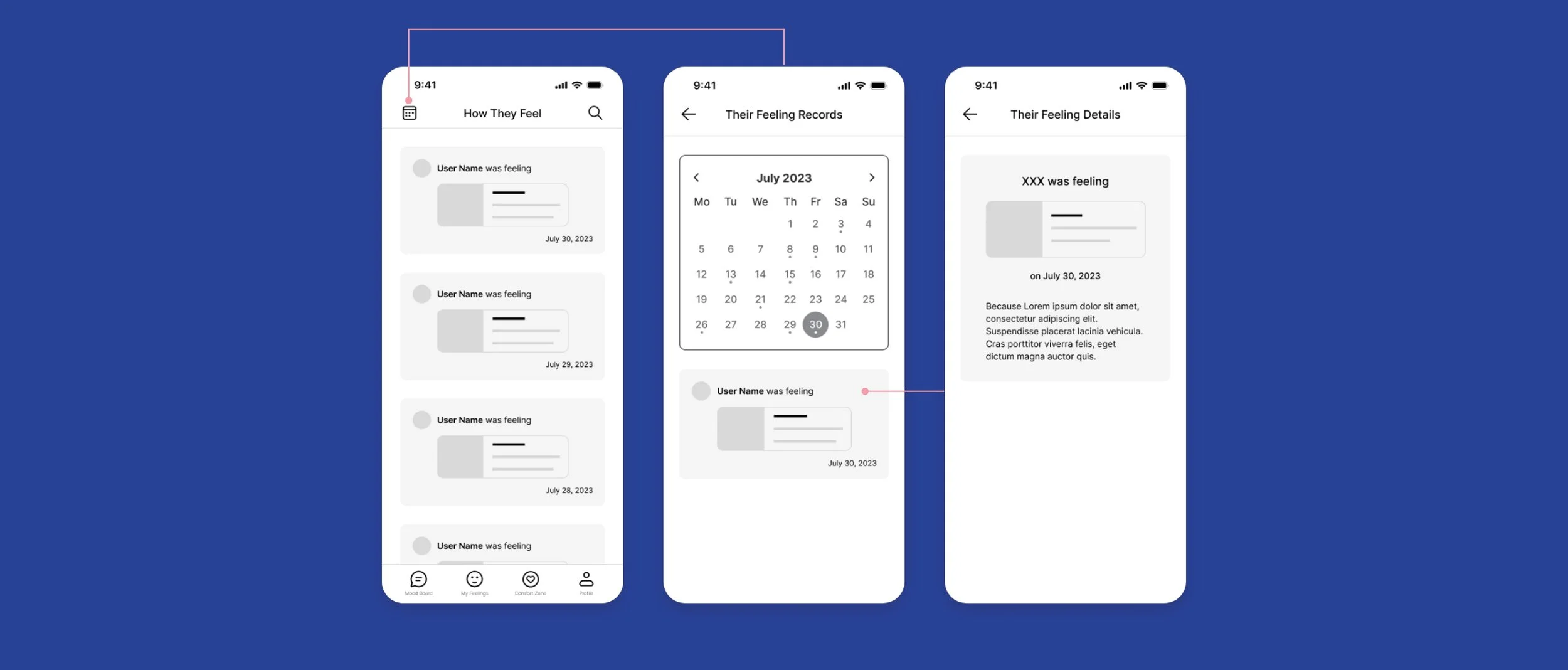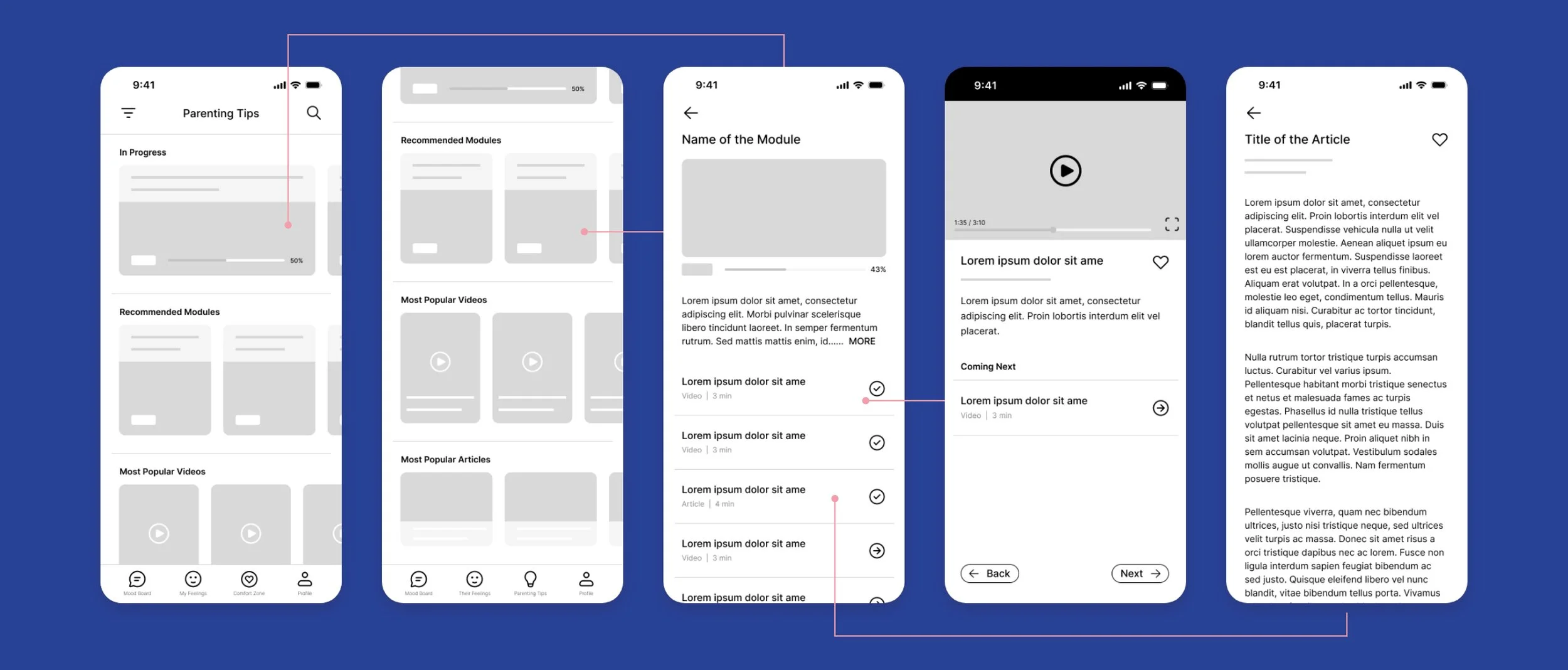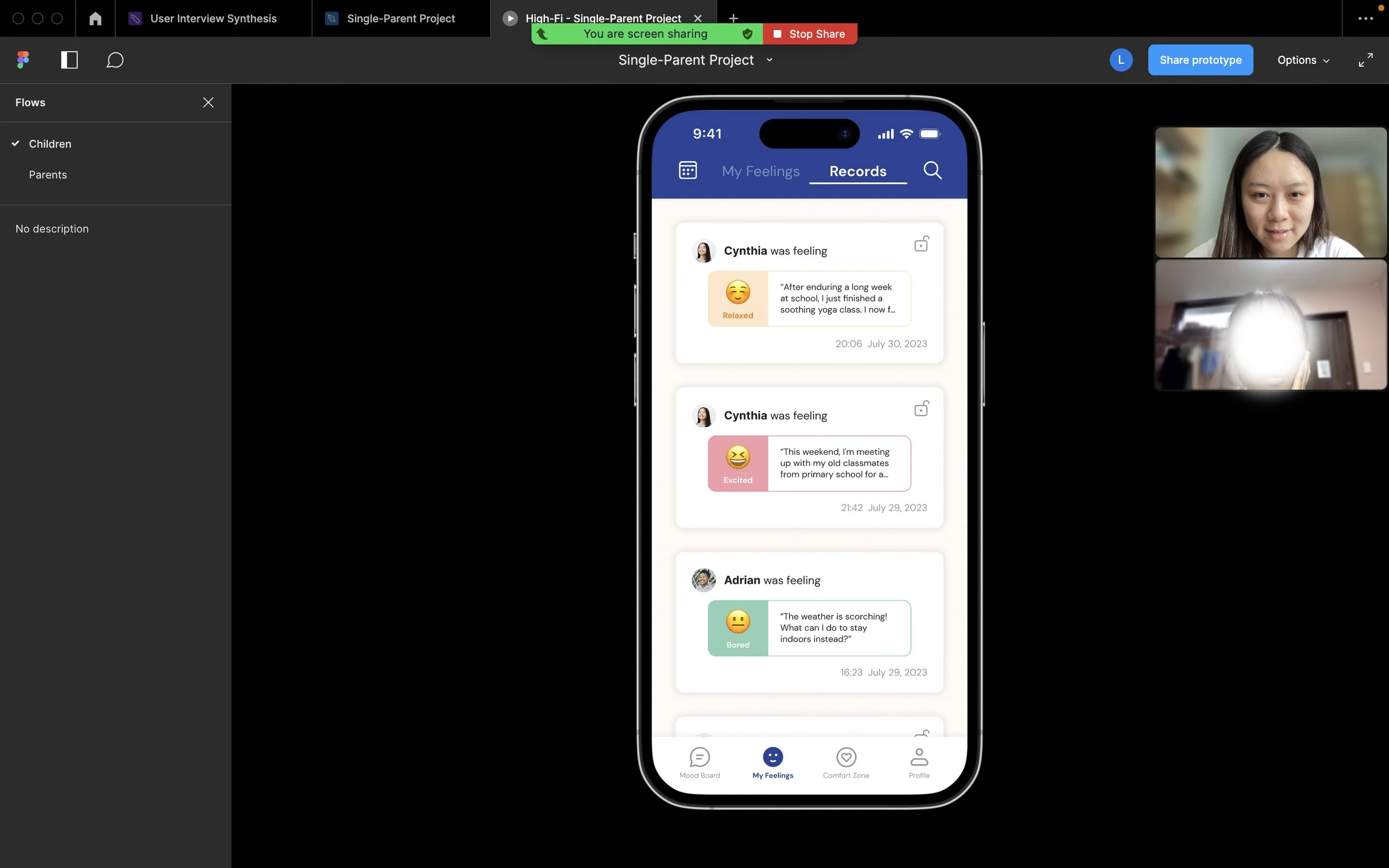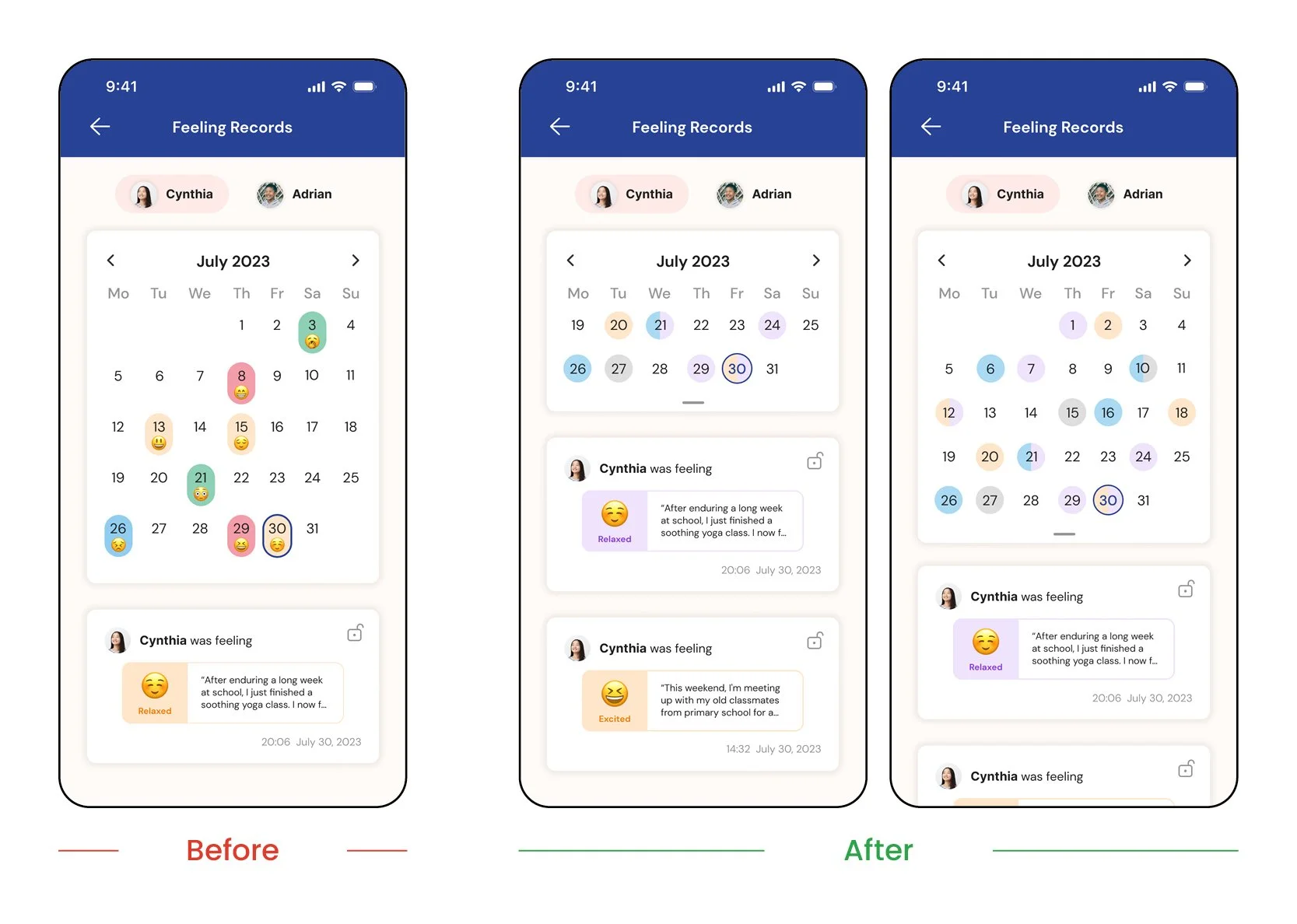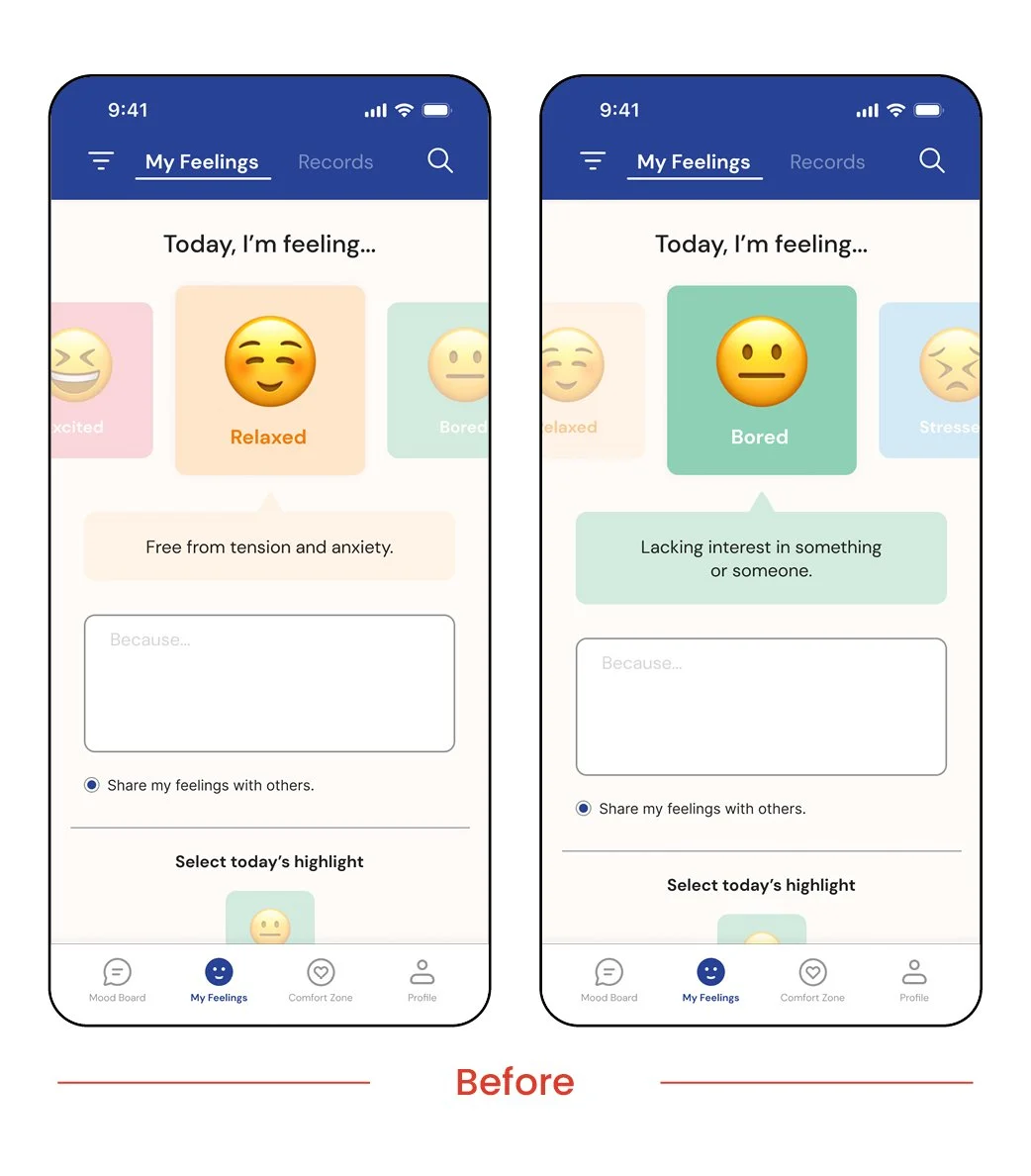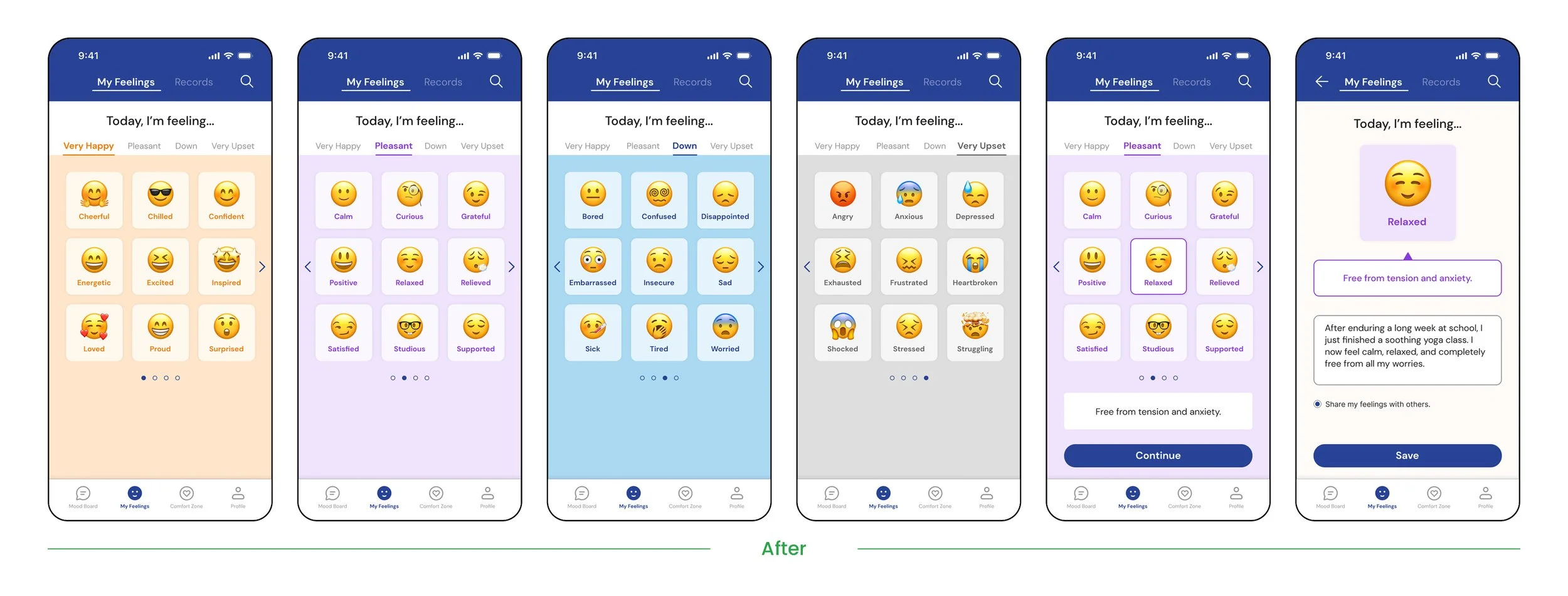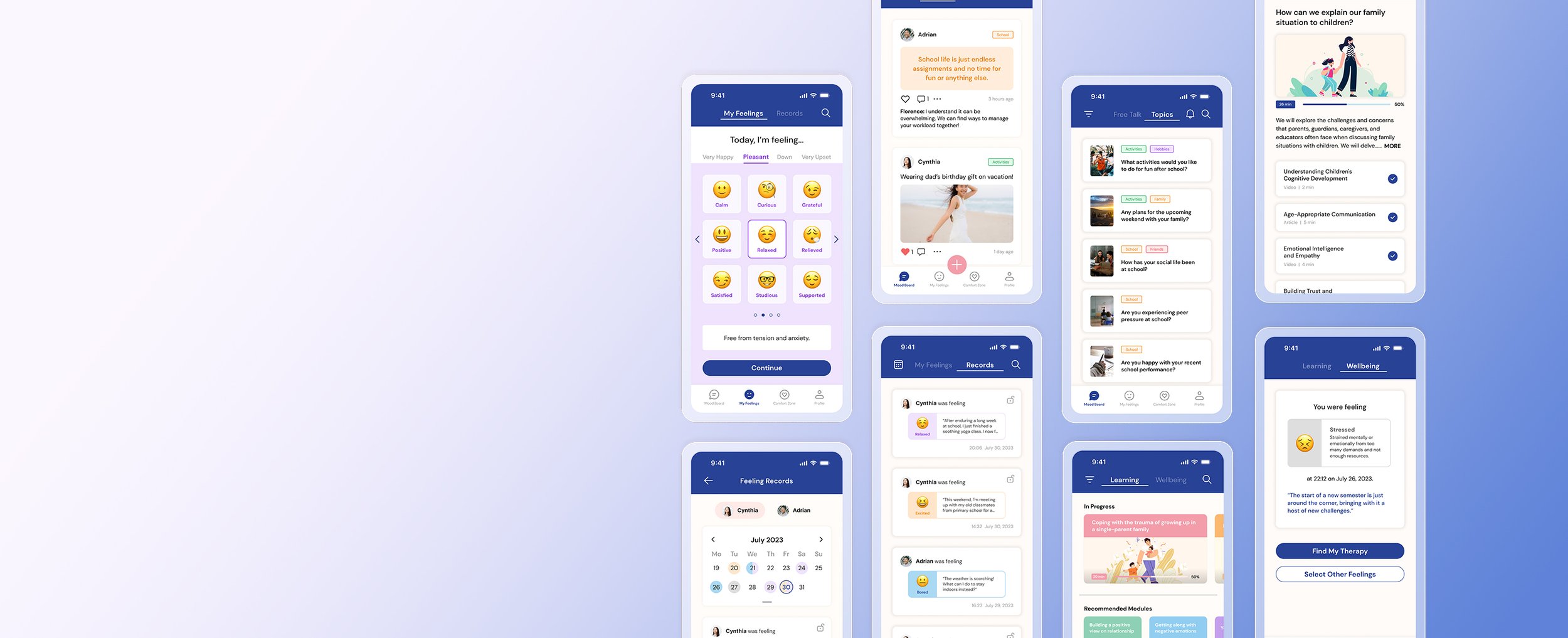
A mobile app for closer communication between single parents and children
Project Type
Passion Project
My Role
Product Designer
UX Researcher
Timeline
May - Sep 2023
Tools
Figma, Illustrator
OVERVIEW
This project was initiated based on my personal background and experiences. Growing up in a single-parent family, I encountered various challenges and frustrations throughout my childhood. Reflecting on those formative experiences, I recognized how my family background shaped my personality and perspective. With a strong vision to alleviate the frustrations and struggles faced by children in similar circumstances, I took the initiative to launch this project, specifically focusing on parenting and education problems in single-parent families.
RESEARCH
To understand single-parent families' challenges, including parenting and education, mental health, economy, legal support, work, and relationships.
I conducted secondary research to comprehend the broader landscape of single-parent families in China and their primary challenges. These challenges span multiple domains, including parenting and education, mental health, economy, legal support, work, and relationships. Furthermore, the children of single parents primarily encounter issues centered around education and mental well-being.
SECONDARY RESEARCH
To further explore and understand specific pain points, I interviewed four single parents with diverse backgrounds. The participants included two divorced individuals, one unmarried individual, and one widow; their children ranged in age from newborn to 10 years old. Each interview lasted 1-2 hours, covering the six major challenges identified in the secondary research.
USER INTERVIEWS
I employed the affinity diagram methodology to synthesize the data gathered from interviews and extract meaningful themes and insights. Below are examples extracted from the diagram:
SYNTHESIS
IDENTIFYING PRIMARY PROBLEMS
Parenting and education emerged as the key focus for the initial solution based on research insights.
Secondary research and four in-depth interviews with single parents were conducted to understand single-parent families' challenges. The research results show that children’s education and both parents’ and kids’ mental well-being were the key issues.
RESEARCH & INSIGHTS
Parenting & Education
Uncertainty regarding how to communicate the family situation to their children properly.
Anxious about the unknown adverse effects on children from their family background.
Mental Health
Struggling to find a suitable confidant to discuss their hardships with.
Additional personalized mental growth support was in need.
IDENTIFY KEY FOCUS
Why Parenting & Education?
Notably, half of the participants identified children's education as their most significant challenge, emphasizing the importance of addressing this area.
Why Teenagers?
Secondary research revealed that about a quarter of divorced couples had marriages lasting 10-15 years, often leaving children entering adolescence. Therefore, the primary target user group is teenagers aged ten and above and their parents.
Why Mobile?
Teenagers in this age group often have their own mobile devices and value privacy, making mobile phones ideal for a personalized, private experience compared to shared devices like tablets.
To identify which point users may need assistance after the family transition, I crafted a long-term journey map.
USER JOURNEY MAP
IDEATION
How might we enhance communications between single parents and their children while alleviating worries for single parents?
Next, I invited two more friends to join the brainstorming session. We came up with 15 ideas and voted for our favorite ones. Here are some examples of the ideas (different colors represent ideas from various participants):
BRAINSTORMING SOLUTIONS
Based on the most favored ideas generated during the brainstorming session, I developed two sitemaps, one for the children’s version and another for the parents’ version of the app.
INFORMATION ARCHITECTURE
Children Version
Parents Version
LOW-FIDELITY DESIGN
The solution to the problem: a platform for intimate communication between single parents and their children, encouraging sharing of feelings, and enabling self-growth and well-being.
I converted the initial sketches into digital wireframes and integrated interactions to create a low-fidelity prototype. The following shows the lo-fi designs for both versions.
LOW-FIDELITY PROTOTYPE
The “Mood Board” section is a free talk space for single parents and their children to engage in free conversations. They can either initiate a post on any topic or select from a range of suggested topics provided.
Mood Board
Children’s Version
Children’s Version
In this section, children can record their emotions and choose whether to share them with their parents and siblings or keep them private. Identifying and tracking their daily feelings is an effective way for children to learn to manage their emotions.
My Feelings
Video lessons are provided for the mental growth of children from single-parent families. An AI therapist is also available in this section, offering children valuable guidance and support for getting out of bad moods.
Comfort Zone
Children’s Version
Parent’s Version
Same as the children’s version. This section is a two-way communication bridge between single parents and their children.
Mood Board
Parent’s Version
Parents can check the feeling records shared by their children and provide timely emotional support if needed.
Their Feelings
Parent’s Version
Courses with parenting tips and personal growth are offered. Articles are included in these courses, as adults typically have better reading abilities than children.
Parenting Tips
HIGH-FIDELITY DESIGN
Developing visually appealing design and adding more details to the previous skeleton.
In this phase, I applied visual design principles and infused the design with colors and typography. The following pictures show the critical interfaces of the first-round hi-fi designs.
CHILDREN’S VERSION
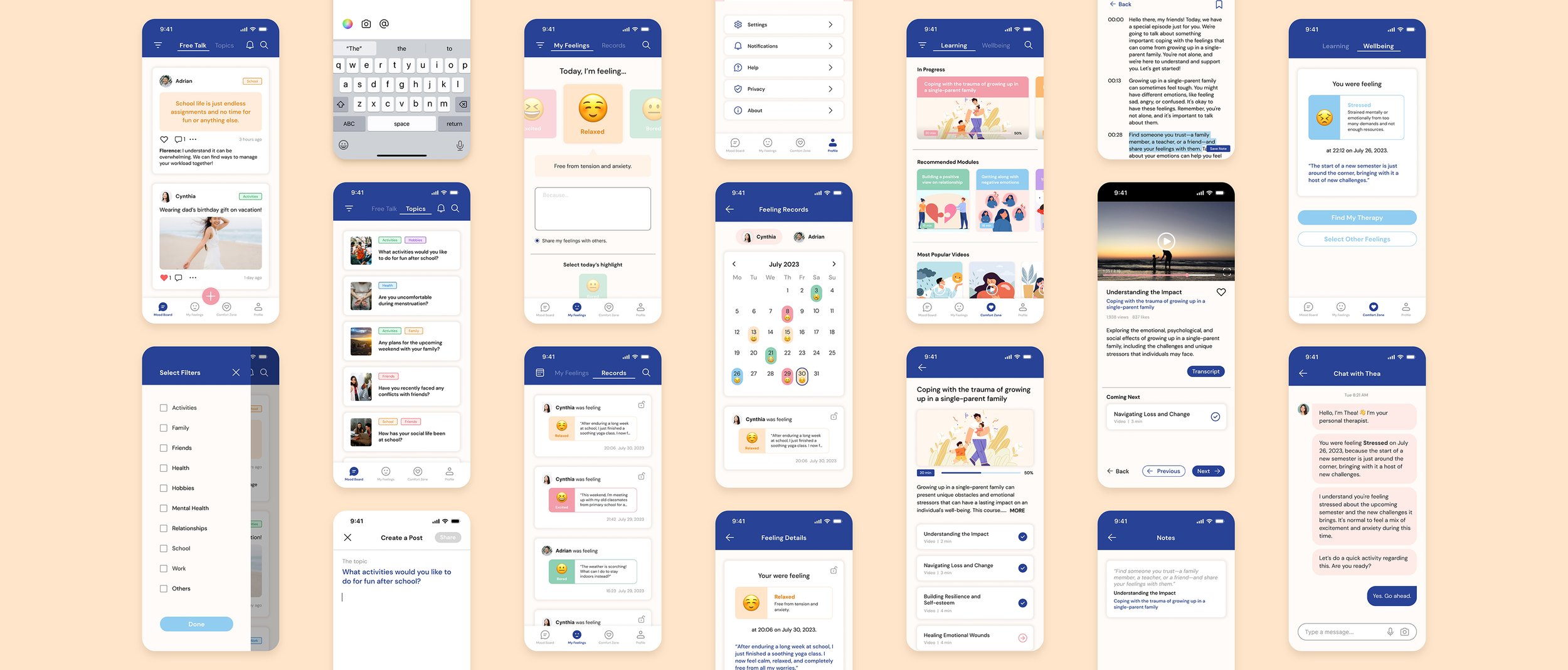
PARENTS’ VERSION
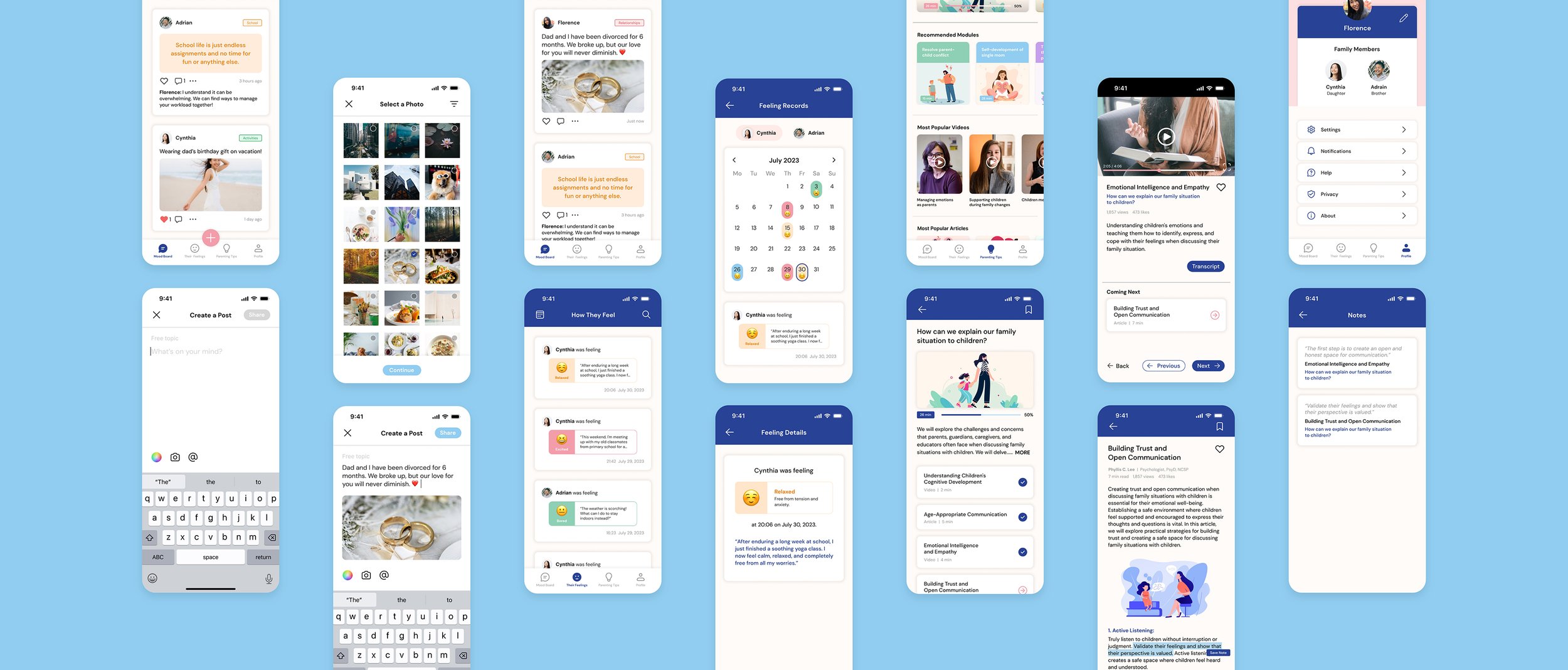
ITERATIONS
Improving the usability of the high-fidelity design.
I sought feedback for my high-fidelity prototype by sharing it with my mentor and other designers for critique. Their primary concerns revolved around displaying emotions and the feeling records within the children’s version's “My Feelings” section.
DESIGN CRITIQUE
To address these concerns, I conducted usability testing to gather valuable opinions from users. The studies focused on aspects such as emotion display layout, color selection for emotion categories, and frequency of recording feelings. The findings from these studies were instrumental in refining the design and improving the overall user experience.
USABILITY STUDIES
DESIGN REFINEMENTS
Optimized for Checking Multiple Feelings in a Day
In the previous design, users had to choose a prominent emotion if they had recorded multiple feelings that day. However, participants preferred recording either multiple feelings daily or twice a week, indicating a focus on individual emotions rather than monthly trends.
Therefore, the calendar was condensed during the iteration to allocate more space for individual feelings below. Users can record more than one emotion daily since participants pay more attention to differences between individual feelings within a day. Emojis in the calendar were removed to avoid confusion from multiple emotions in a single day.
A Categorized Layout for Emotion Selection
In the first round design, only three feelings were displayed at a time. The emotion categories were hidden in the filter icon. Participants also expressed concerns about the colors applied to each category of emotions.
In the refined version, nine emotions were showcased within their category simultaneously, enabling easy comparisons. The colors assigned to these emotions followed a specific pattern suggested by participants, with yellow representing the most positive, followed by purple, blue, and grey for increasingly negative emotions.
FINAL DESIGN
MindLink, a platform for single parents and their children to communicate their inner feelings and thoughts, facilitating mutual well-being.
Design iterations were made based on the insights from usability studies. And here comes the final design of the product - MindLink.
Free talk through the mood board to avoid embarrassment speaking face-to-face
The "Mood Board" section allows users to express themselves freely, especially when discussing family-related topics. This eliminates potential embarrassment that can occur during face-to-face communication.
Users can post their own topics or choose from suggestions tailored to their family background, which were gathered during the onboarding process.
Encouraging children to identify and record their feelings
To alleviate single parents' concerns about the potential negative impact of family background on children, the "My Feelings" section was created. It empowers children to easily identify and record their emotions, fostering a clearer understanding of their emotional states.
Ensuring children's privacy is also significant. Users can choose either to share their feelings with their family members or keep them private. If shared, parents can view the emotions recorded by their children.
The "Parenting Tips" section in the parents' version provides professional advice for single parents to improve communication with children and enhance their parenting skills.
Likewise, the children's version includes a "Comfort Zone" section that offers mental health tips to help children cope with frustrations due to their family backgrounds.
In addition, the app integrates an AI therapist that provides cognitive behavioral therapy (CBT) sessions to children, ensuring they receive the necessary support and guidance.
Parenting tips for single parents + well-being tips and AI therapist for children
REFLECTIONS & NEXT STEPS
This project is not only a UX-focused project but also a topic of social issues. Throughout my work on this project, I discovered that it involved various aspects beyond creating a seamless user experience. These aspects included interpersonal communication, ethical challenges regarding children's privacy, and variations in relationships and parenting philosophies among different single-parent families.
To address these multifaceted challenges, further research and design iterations are necessary to find solutions from diverse perspectives. For instance, during the usability testing, a participant expressed concerns about selectively sharing certain feelings with a specific family member. In such cases, private chat windows may need to be considered.


